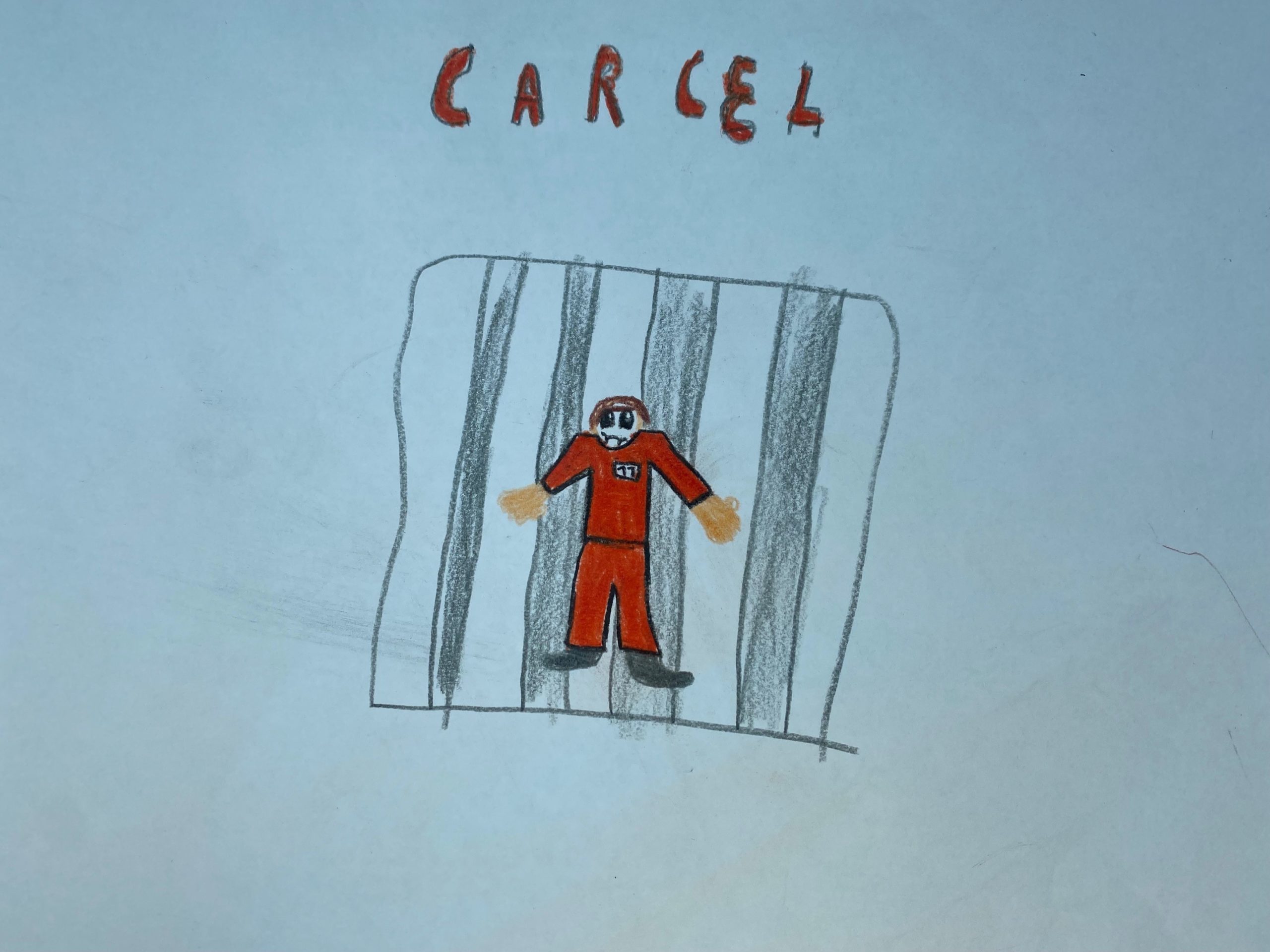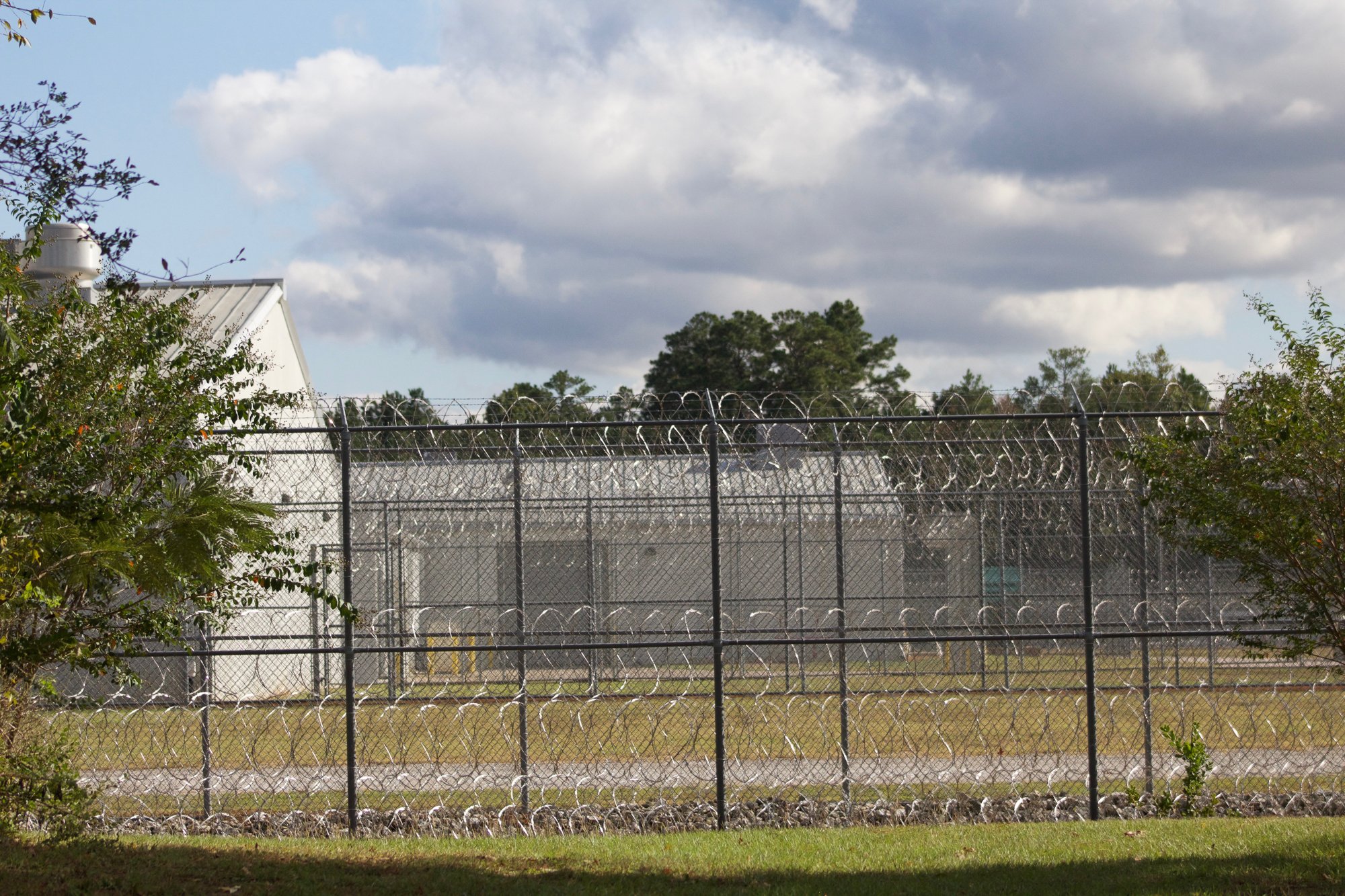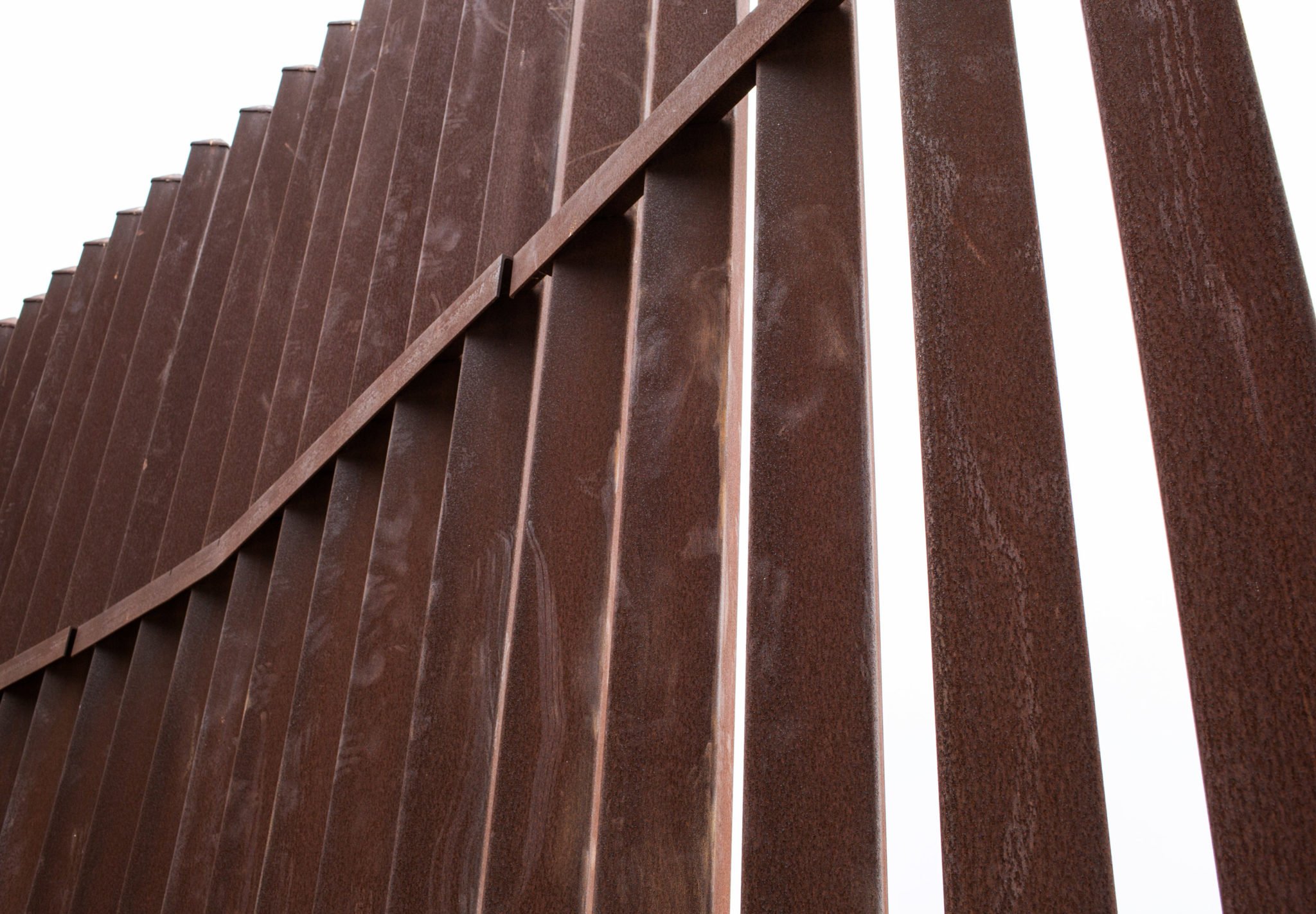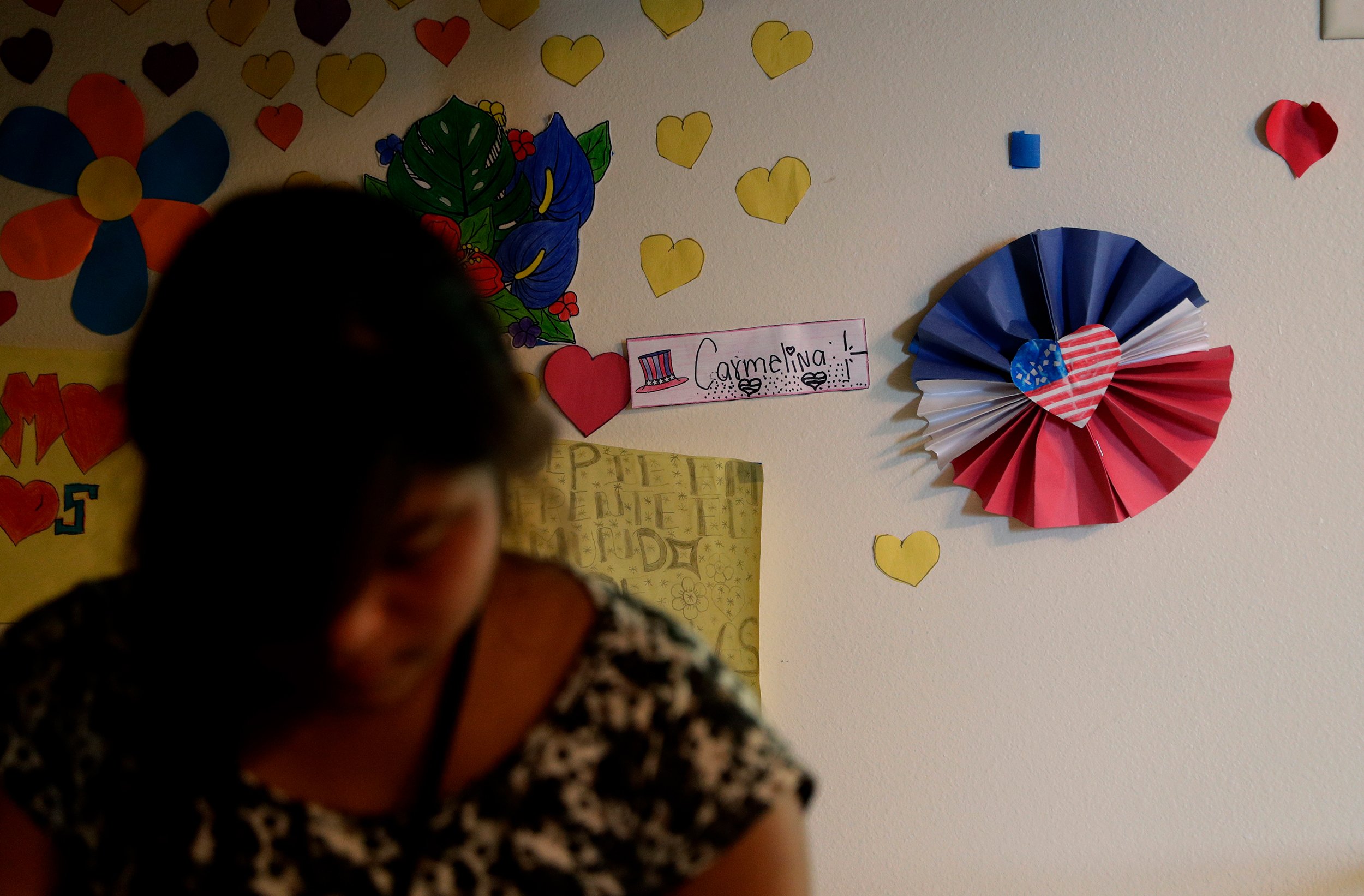
How Trump Shredded What Little Protection Our System Offers Migrant Kids
The administration uses emergency exceptions to break government rules for detaining migrant minors. What happens when that becomes the norm?

Above: Decorations cover the walls of rooms of immigrants at the newest holding center for migrant children in Carrizo Springs.
Detaining kids is bad. Don’t take my word for it; listen to the doctors: “Even brief detention can cause psychological trauma and induce long-term mental health risks for children,” wrote the American Academy of Pediatrics in a 2017 policy statement on the treatment of immigrant minors. Or, if you prefer, take heed of a federal advisory committee on family detention that wrote in 2016: “Detention or the separation of families … are never in the best interest of children.” It’s a bad thing; we shouldn’t do it.
Still, there’s a hierarchy of badness at play—a ladder that leads only eventually to the pit of Clint, Texas, and the nightmarish conditions attorneys witnessed at a Customs and Border Protection (CBP) holding facility there last month: outbreaks of scabies, shingles, and chickenpox; children in soiled, reeking clothes; a lice infestation; chronic hunger and exhaustion; kids as young as 8 caring for toddlers. To get to Clint—or the former tent city 15 miles south in Tornillo, or the sprawling for-profit facility in Homestead, Florida, both of which have also made headlines for substandard conditions—a number of rules and protections already written into law must be shunted aside in the name of expediency, cruelty, or ostensible necessity. That’s how our system can go from harsh to horrendous.
The United States’ system of protections for migrant children comes primarily from the 2008 Trafficking Victims Protection Reauthorization Act and the so-called Flores agreement, a 22-year-old court settlement between the federal government and human rights attorneys. Current law generally requires that migrant kids who arrive at the border alone or with family spend no longer than 72 hours in CBP holding facilities. And there’s a damn good reason for that. Known in Spanish as hieleras (ice boxes) or perreras (kennels), these facilities were built for single adults, and they’ve long been notorious for cold temperatures, inedible food, and a lack of basic hygiene products.
“Even brief detention can cause psychological trauma and induce long-term mental health risks for children.”
A place like Clint will never be good for children, but what pushed things over the edge was this: Government officials were holding kids there for as long as a month—tenfold the normal legal limit—and they had crammed as many as 700 children in a facility meant for only 100. When you blow past a building’s capacity like that, suddenly there’s no room for luxuries like beds, illness becomes much harder to contain, and food and supplies start running short. When you make a child sleep on the floor with all the lights on for a single night, that’s harsh and senseless; when you do so for weeks on end, it starts to look more like torture.
So how did things come to this? Officials claimed an emergency. The Flores agreement allows for temporary exceptions during large influxes, and the number of unaccompanied children arriving at the border had risen substantially since around February. But officials created a humanitarian crisis by essentially tossing the rulebook out the window. It’s in the details of building capacities, lengths of stay, and bureaucracy that lurk the devils that recently shocked the nation’s conscience.
The problems spread beyond Clint. Five CBP facilities in the Rio Grande Valley suffered “dangerous overcrowding and prolonged detention” in violation of agency rules, according to a report released earlier this month by the Office of Inspector General for the Department of Homeland Security (DHS). A rash of press coverage and Congressional attention forced CBP to partially clean up its act. As of July 11, the number of kids in holding facilities had dropped from 2,500 in June to 211; the number held for longer than 72 hours had gone from 1,500 to one; and Clint’s population had plummeted to around a dozen children, according to the Wall Street Journal. CBP was able to make these changes in part due to an emergency spending package from Congress and a 28 percent drop in the number of migrants arriving at the border from May to June.
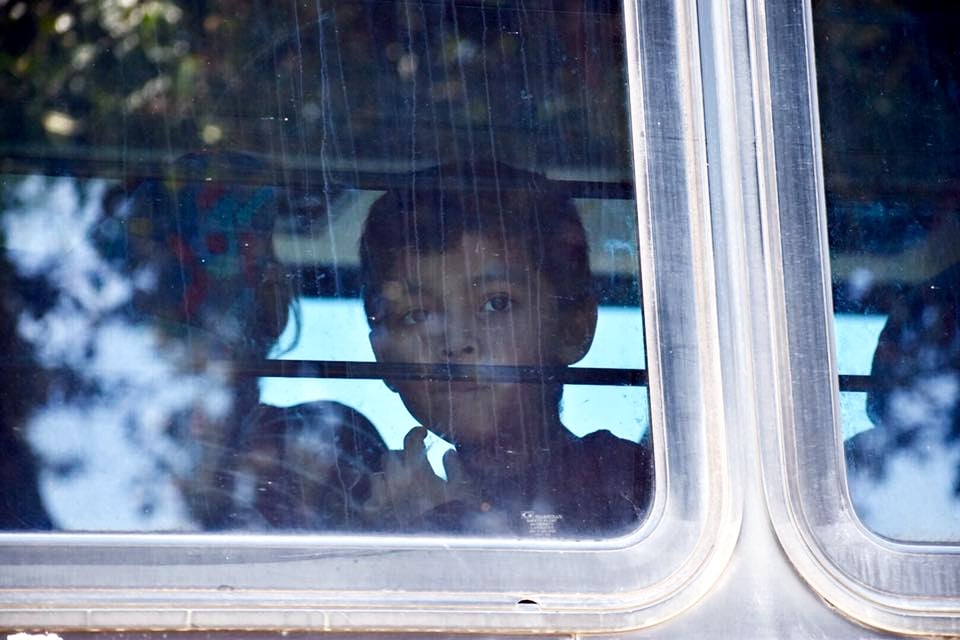
But the administration’s tendency to ditch legal protections and agency rules has by no means disappeared. After a brief stay with CBP, unaccompanied minors generally move on to the custody of the Office of Refugee Resettlement (ORR), within the federal health department. The Flores settlement urges and pediatricians agree that kids in ORR custody should be held in small, state-licensed facilities for the shortest amount of time possible before they can be released to parents or relatives. (There are 168 such facilities nationwide, most of which are run by nonprofits under contract with the feds.) Big facilities tend to become more like jails, as staff struggle to maintain discipline, and the longer kids are held, the more they fall into despair and anxiety. The average ORR stay was around 30 days at the end of the Obama administration. But here, too, things have gone to shit.
Since March 2018, a mega-shelter that’s held as many as 2,700 kids has operated in Homestead, Florida. The facility is not state-licensed. To get around that requirement, Health and Human Services officials have deemed it a “temporary emergency facility”—even though the number of unaccompanied minors arriving only reached unusual highs in recent months. No state licensing means no unannounced state inspections to monitor conditions. As of late last year, the average stay at Homestead had reached 89 days, and in April, Amnesty International reported that some kids had been there for as long as eight months. Last December, the Trump administration rolled back a policy that was deterring relatives from sponsoring kids in ORR custody, dropping the average stay from around 90 days to 45.
To make things worse, Homestead is one of few ORR facilities in the country that’s run for profit. Kids shouldn’t be held by operators incentivized to cut corners, something the government tacitly acknowledges by normally contracting with nonprofits.
Officials created a humanitarian crisis by essentially tossing the rulebook out the window.
In Texas, another unlicensed “emergency” facility recently opened in Carrizo Springs, a sprawling, barbed-wire-topped compound set to hold up to 1,300 kids. From last June through January, an unlicensed tent city operated in the West Texas desert in Tornillo, holding as many as 2,800 children. The main pretext then was the self-made crisis of “zero tolerance” and the accompanying family separations. That crisis continues in miniature as the administration separates children from parents and other caretakers like siblings and uncles on dubious safety grounds. Those families could be released or transferred to family detention centers—which now stand almost empty. Instead, Trump has needlessly inflated the number of traumatized kids in ORR custody, generating demand for large emergency facilities.
Even the guy who runs some of these ad hoc facilities says they’re no good. Kevin Dinnin, who directs BCFS, the nonprofit that operated the Tornillo facility, had sworn never to operate another large emergency center again—until he saw the even worse conditions at Clint. “I hate this mission,” he said at the recent unveiling of the Carrizo Springs facility, which his nonprofit also runs. “The only reason we do it is to keep the kids out of the Border Patrol jail cells.”
In an alternate timeline, the Trump administration could have spent the last two and a half years improving CBP’s holding centers and proactively building out permanent, licensed ORR facilities. There would still be plenty to criticize, but it would be better than tent cities and hellholes like Clint. Rather than turning to family separations and brute force deterrents like “Remain in Mexico,” the feds could have also spent that time building up community-based family case management programs and other alternatives to detention. Alas, for at least a while yet, we’re stuck with a president who can only see success in lowering arrival numbers.
Kids shouldn’t be held by operators incentivized to cut corners, something the government tacitly acknowledges by normally contracting with nonprofits.
But arrival numbers have always fluctuated, and in the coming months, they will depend on everything from weather to Mexican and Guatemalan domestic politics to the Ninth Circuit Court out in California. We also don’t know what Trump’s CBP will get up to if public scrutiny once again wanes. The time is always now to demand the government respect its own laws shielding foreign-born children.
Don’t take all this from me; heed the philosophers. Giorgio Agamben, the Italian political theorist, has written extensively about how the worst totalitarian regimes in history used “states of exception”—a means of ignoring constitutional law while leaving it nominally in place—to justify their worst atrocities. Those exceptions have a nasty habit of becoming permanent. Relevant to today’s migrant detention system, he wrote in 1995: “The camp is the space that is opened when the state of exception begins to become the rule.”
Going forward, we must demand that when it comes to migrant children, the Trump administration—if it’s incapable of anything nobler—at least abide by the rules on the books.
READ MORE:
- As a Pediatrician, I Know There’s No Way to Jail Migrant Families Without Hurting Kids: If we really care about migrant kids, we can’t stop at ending the obvious atrocity of family separation at the border.
- ‘Treated Worse than Dogs’: Immigrant Kids in Detention Give Firsthand Accounts of Squalid Conditions: Hundreds of immigrant children and parents in federal detention facilities say they’ve endured inedible food, verbal and physical abuse and a lack of medical treatment.
- Detained Migrants Held in Border ‘Iceboxes’: Researchers found that detained migrants in the Rio Grande Valley are held in overcrowded, freezing rooms—without beds—for days at a time.
- From Crystal City to Carrizo Springs, When Will We Stop Locking Up Kids? Crystal City, Texas, was home to the nation’s largest detention camp during World War II. Now a camp for migrant teens has opened just a few miles away.
